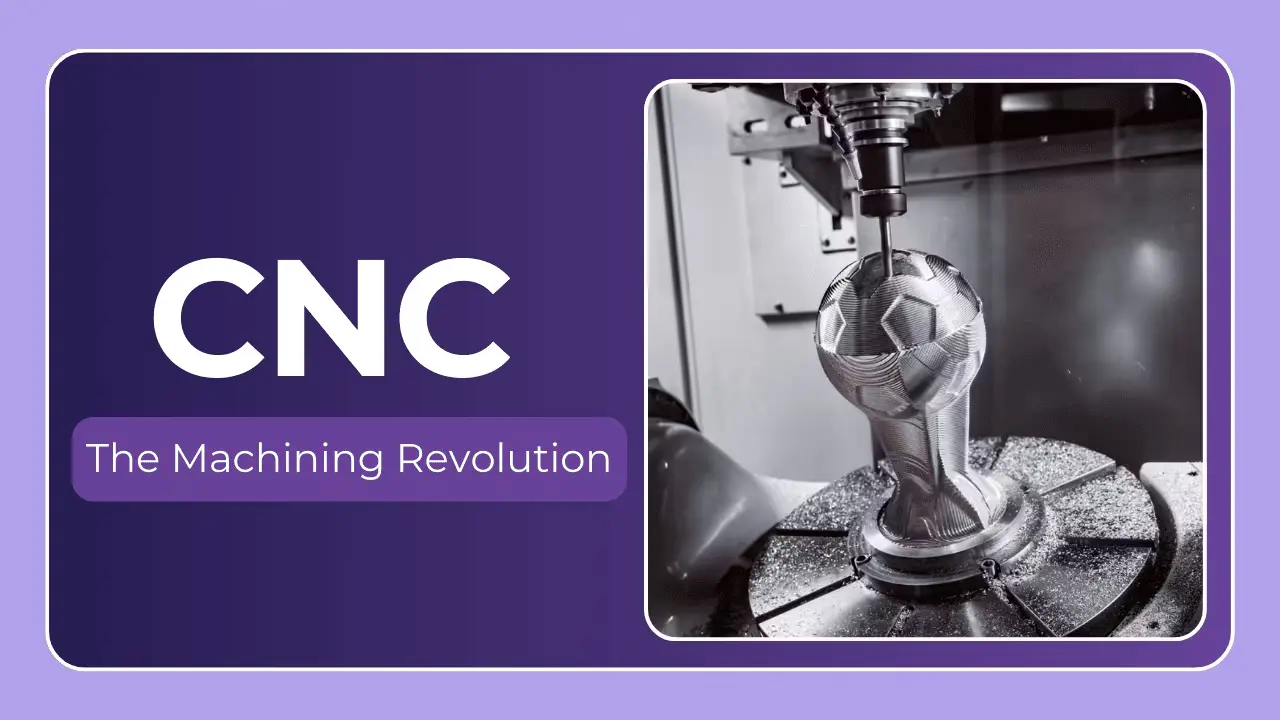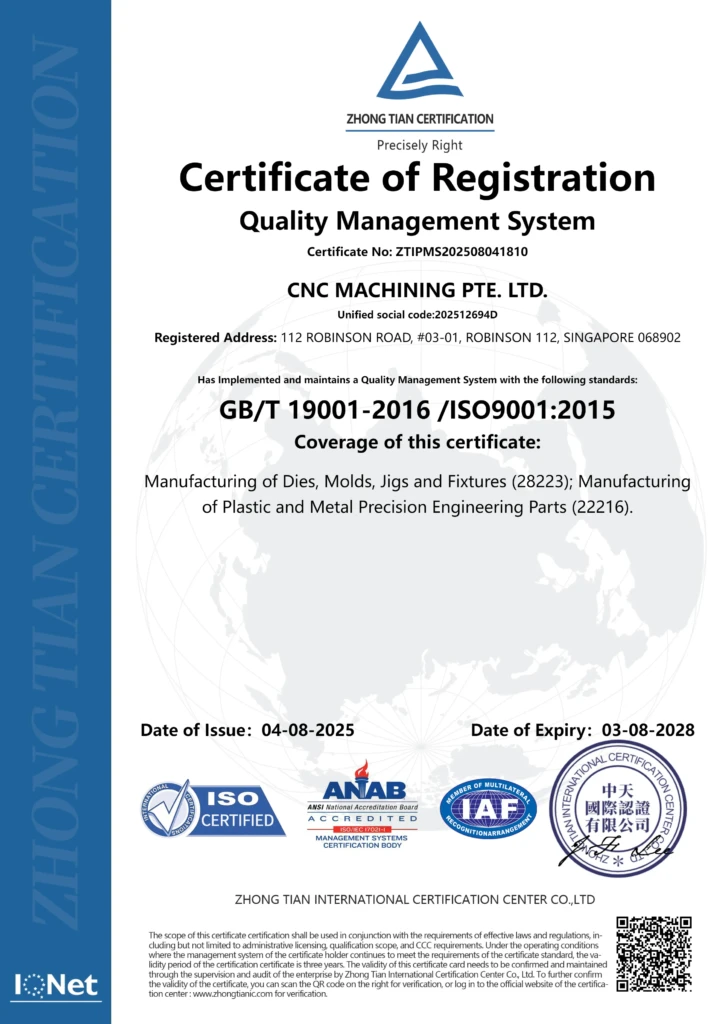Bringing Ideas to Life: A Deep Dive into CNC Prototype Machining
The journey of a new product, from a spark of an idea to a tangible reality, is often complex. And a critical step along that path is prototyping. Getting a physical representation of your design allows for crucial testing, validation of form and function, and the identification of potential issues before committing to mass production. While various prototyping methods exist, CNC (Computer Numerical Control) prototype machining stands out for its precision, versatility, and speed.
At CNC MACHINING PTE. LTD, based in Singapore, we specialize in five-axis CNC machining, solving challenging metal parts manufacturing problems and offering a complete solution – from initial design realization to finished, ready-to-test prototypes. This article will delve into the world of CNC prototype machining, exploring its advantages, the process involved, materials commonly used, key considerations for design, and why it’s often the preferred choice for demanding applications.
What is CNC Prototype Machining?
At its core, CNC machining is a subtractive manufacturing process. This means a pre-existing block of material is cut away using a variety of rotating tools to create the desired shape. What sets CNC machining apart is that this entire process is computer-controlled. Instead of a machinist manually operating the tools, a pre-programmed computer program dictates every movement, ensuring incredible accuracy and repeatability.
For prototyping, CNC machining takes your digital design (typically a CAD file) and translates it into a physical part. This is unlike additive manufacturing (like 3D printing) where material is added layer by layer.
CNC vs. Other Prototyping Methods:
| Method | Cost | Speed | Material Options | Accuracy | Surface Finish | Best For |
|---|---|---|---|---|---|---|
| CNC Machining | Moderate | Moderate | Wide Range (Metals, Plastics) | High | Excellent | Functional prototypes, complex geometries, low to medium volumes |
| 3D Printing | Low/Moderate | Fast | Limited (Primarily Plastics) | Moderate | Moderate | Visual prototypes, complex internal features |
| Injection Molding | High | Slow | Plastics | High | Excellent | High-volume production, final product form |
| Casting | Moderate | Moderate | Metals | Good | Good | Larger parts, complex shapes |
The CNC Prototype Machining Process: A Step-by-Step Look
- Design & CAD Modeling: The process starts with a 3D CAD (Computer-Aided Design) model of your part. This model serves as the blueprint for the entire machining process. Collaboration with your CNC machining partner like CNC MACHINING PTE. LTD at this stage is vital to ensure manufacturability – that the design can actually be created with the available tools and processes. We can often help refine designs for optimal machining efficiency.
- CAM Programming: The CAD model is then imported into CAM (Computer-Aided Manufacturing) software. This software translates the design into a language the CNC machine understands – G-code. CAM programming necessitates defining toolpaths, cutting speeds, feed rates, and other crucial parameters. At CNC MACHINING PTE. LTD, our experienced programmers optimize these settings for each part and material.
- Material Selection: Choosing the right material is critical. (More on this below).
- Setup & Machining: The material is securely mounted onto the CNC machine’s worktable. The machine then follows the G-code instructions, precisely removing material with various cutting tools. Five-axis machining, offered by CNC MACHINING PTE. LTD, provides greater flexibility and allows for machining of complex geometries with multiple angles.
- Post-Processing & Finishing: Once the machining is complete, the part often requires post-processing. This might include deburring, polishing, anodizing, painting, or other finishing treatments to achieve the desired surface finish and dimensional accuracy. We offer comprehensive post-processing and finishing services to deliver a production-ready prototype.
- Quality Control: Rigorous quality control checks are performed throughout the process and on the finished part. This often involves using coordinate measuring machines (CMMs) and other precision instruments to verify dimensional accuracy and adherence to specifications.
Common Materials Used for CNC Prototype Machining
The versatility of CNC machining extends to a broad range of materials. Here’s a breakdown of some commonly used options:
- Metals:
- Aluminum: Lightweight, strong, and easily machinable. Ideal for housings, brackets, and structural components. (Alloys: 6061, 7075)
- Stainless Steel: Corrosion-resistant and durable. Used for parts requiring high strength and cleanliness. (Alloys: 304, 316)
- Steel Alloys: Provides exceptional strength and hardness for demanding applications. (Alloys: 4140, Tool Steel)
- Titanium: High strength-to-weight ratio and excellent corrosion resistance. Used in aerospace and medical applications.
- Brass/Copper: Excellent electrical conductivity and machinability.
- Plastics:
- ABS: Common engineering plastic, known for its toughness and impact resistance.
- Polycarbonate: Transparent and extremely durable.
- Delrin (Acetal): High strength, rigidity, and low friction.
- Nylon: Wear-resistant and self-lubricating.
- PMMA (Acrylic): Optically clear and easy to machine.
Material Properties Table (Example):
| Material | Density (g/cm³) | Tensile Strength (MPa) | Hardness (Rockwell) | Cost (Relative) | Common Applications |
|---|---|---|---|---|---|
| Aluminum 6061 | 2.7 | 310 | 60 | Low-Moderate | Housings, brackets |
| Stainless 304 | 8.0 | 500 | 85 | Moderate | Food processing, medical |
| ABS Plastic | 1.04 | 40 | 90 | Low | Enclosures, prototypes |
| Titanium Ti-6Al-4V | 4.43 | 895 | 30 | High | Aerospace, medical |
Design Considerations for CNC Prototype Machining
Designing for CNC machining requires a slightly different approach than designing for other prototyping methods. Here are some key considerations:
- Draft Angles: Incorporate draft angles (usually 1-2 degrees) on vertical walls to facilitate easier removal of the part from the machine and to prevent interference with cutting tools.
- Minimum Feature Sizes: CNC machines have limitations on the smallest features they can reliably create. Consult with your machining partner to determine appropriate minimum dimensions.
- Corner Radii: Sharp internal corners are difficult to machine cleanly. Incorporate small radii (e.g., 0.0625") to improve machinability and reduce stress concentrations.
- Tolerance Specifications: Clearly define your tolerance requirements. Tighter tolerances increase manufacturing costs but ensure greater precision.
- Material Selection: Consider the functional requirements of the prototype (strength, temperature resistance, etc.) when choosing a material.
- Wall Thickness: Ensure consistent wall thickness where possible to avoid uneven cooling and potential warping during machining.
- Undercuts: Features that are recessed and inaccessible from a single direction introduce complexity and cost. Minimize undercuts whenever possible or design for multi-axis machining.
Why Choose CNC MACHINING PTE. LTD for Your Prototype Needs?
CNC MACHINING PTE. LTD brings a wealth of expertise and cutting-edge technology to your prototyping projects. Here’s what sets us apart:
- Five-Axis Machining: Our advanced five-axis machines allow us to tackle incredibly complex geometries that are impossible or impractical to achieve with traditional three-axis machining.
- Material Versatility: We handle a wide range of materials, giving you the freedom to choose the best option for your application.
- One-Stop Solution: From design assistance to post-processing and finishing, we offer a complete suite of services, saving you time and simplifying the process.
- Rapid Turnaround: We understand the importance of speed in the prototyping phase and are committed to delivering parts quickly and efficiently.
- Strict Quality Control: We maintain rigorous quality control standards to ensure that every part meets your exact specifications.
- Competitive Pricing: We strive to offer the best value for your investment without compromising on quality.
Conclusion: Accelerating Innovation with Precision
CNC prototype machining is a powerful tool for bringing product ideas to life. Its precision, material versatility, and ability to create functional prototypes make it the preferred choice for a wide range of industries, from aerospace and medical to automotive and consumer products.
At CNC MACHINING PTE. LTD, we’re dedicated to helping our clients navigate the complexities of CNC machining and deliver high-quality prototypes that accelerate their innovation process. Don’t let manufacturing limitations hold back your vision. Customize your precision parts now at the best price! Contact us today to discuss your project and discover how we can help you transform your ideas into reality. We’re more than just a machining service – we’re a partner in your success.




